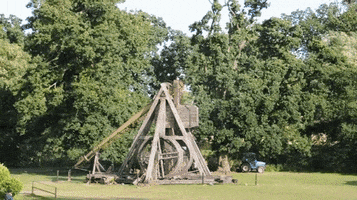Yeah you're right it was screwdrivers. It was a while ago that I read about it.Hastur wrote: ↑Thu Apr 16, 2020 12:41 amI thought it was a lack of screwdrivers.Montegriffo wrote: ↑Thu Apr 16, 2020 12:30 amI've read about it in detail and it wasn't the rifles that were crated up it was the ammo. They got overrun by a much bigger force of warriors armed only with spears because they underestimated their enemy and couldn't get the ammo crates opened up quickly enough to resupply themselves. They'd stopped for the day but hadn't defended their position properly out of arrogance and incompetence and were rushed and massacred.
Rourke's Drift was the next day where they were in a much better defensive position but almost out of ammo by the time the Zulu's withdrew.
The film over exaggerated the number of Zulu deaths and didn't mention the fact that the Zulu commander had disobeyed instructions not to attack
which was why he withdrew when he did. The last charge at dawn in the film was pure fiction, they left during the night after losing about 400 men.
https://www.quora.com/Was-the-defeat-of ... heir-linesThe British defeat , whilst overconfidence, lack of reconnaissance screen and poor tactics played a major part was down to the lack of screwdrivers.
Just to correct some of the misguided comments already posted. The column was not on the march and was not ambushed. The main force was in a temporary encampment on the slopes of the mountain with a commanding view towards the direction of the perceived threat. The commanders decided for unknown reasons not to laager the wagons or order defence works to be set up.
It has been suggested that the British Henry Martini Boxer rifle could not be loaded fast enough - Tosh! The breach loading Boxer could fire as fast as a soldier could load it with ammunition and that was the unfortunate problem.
In 1879 the British Army Logistic train was run by the Commissariat, who had their own rules and orders:
Rule 1 All munitions were to remain packed and only conditioned and issued for use immediately prior to engagement to ensure its preservation and accountability :-
The ammunition has been packed to preserve it on the long sea voyage from the UK in solid wooden cases containing a soldered metal liner, lined with lead foil, and the rounds wrapped in waxed linen cross-tied with wire in 10’s.
This is the original drawing of a standard Ammo box. Note the steel screws securing the opening section. These had to be removed before the section would slide out.
Once exposed, the soldered seal to the tin plate liner had to be pried off….. with a bayonet or pick axe. ( The soldered handles would pull off ) This was the standard ammo box and held 1260 rounds.
10 rounds wrapped in Waxed and sealed linen and cross tied with steel wire. These could only be opened with pliers or a bayonet.
The Soldiers in the column were only issued with their first line ammo, 70 rounds each. British deliberate fire was 10 to 12 rounds a minute, rapid was 30 rounds a minute, so each 100 man company needed the entire content of one ammo box, every minute. The subsequent inquiry learnt that no ammo boxes were pre-opened until at least one company had expended all their ammo. Then came the biggest problem, they did not have enough screwdrivers to remove the screws, rumour spread that there was only one in fact. The steel banded, dovetail joined boxes were too solid to smash open, even with pick axes.
Companies with no ammo were obliged to fight with bayonets against the numerically stronger Zulus who managed to flank the firing line and start to roll up the companies.
The Zulus captured 400,000 rounds of ammo in unopened boxes which gives some idea of the total failure of the logistics supply staff.
I used the battle of Isandlwana to highlight the importance of resupply planning, preparation and delivery to junior officers and my men. To lose what on paper should have been an overwhelming victory of superior ranged firepower because of the lack of a basic tool is probable the greatest avoidable disgrace to the British Army.
Failure to get the ammo to the men. I think the halt had been made at a poorly chosen place too. The Zulus were able to approach in large numbers without being seen until too late using either low hills or gullies, I can't remember which.




